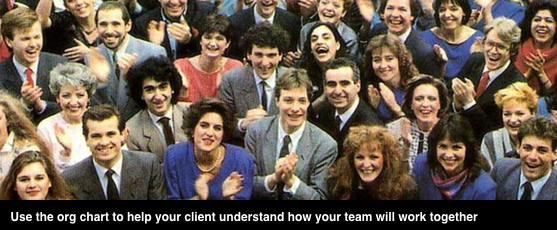Most large contract RFOs and RFPs require one or more organizational charts. Beyond compliance, the initial drafts of charts we see vary widely in their ability to showcase the proponent’s approach to team structure and to score well.
In this and following posts, we’ll review the basics of org chart design and ideas for making yours stand out against the competition.
Org chart fundamentals
The org chart captures on one page your understanding of the elements of the project, the roles and numbers of individuals needed to fulfill contract requirements, and how you propose to structure your team, including formal reporting relationships and communications channels.
Follow accepted practices when developing org charts. For example:
- Create a hierarchical structure with the client at the top and the proponent organization below, starting with the project leader
- Use functional groupings aligned with the contract deliverables, e.g. design, build (or transition), operate and maintain
- Align horizontally individuals with similar levels of responsibility
- Use solid lines for reporting relationships, dotted lines for advisory and collaborative relationships
- Ensure names, titles and headcounts align with the RFX, narrative and resumes
- Use your corporate colours for your team members’ boxes and your client’s colours for its team
- If subcontractors are included on the chart, choose a common neutral colour and use for all
- Use distinctive boxes to identify key individuals
- Organize the chart to avoid crossing lines
- Keep the chart clean and simple, using solid colours and tints in org chart boxes (avoid blends)
Beyond the basics
In coming weeks, we’ll provide examples of the above, and show:
- How your organization will evolve through project phases
- Governance structures, both internal and including the client/project sponsor
- Availability of support from your larger organization
- How to use white space to describe key differentiators
Payoff
Teams that invest in thinking about and then rendering their organizational charts in client-focused ways get more of the points for the chart itself—but also make it easier for evaluators to understand narratives describing how the organization will function.


